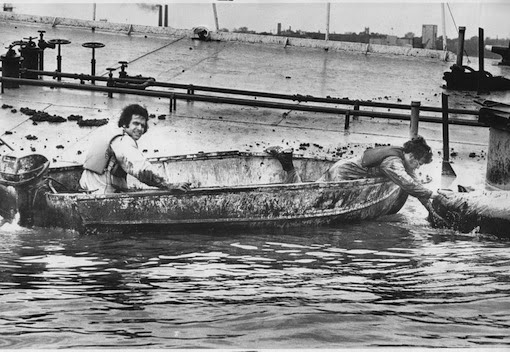
HISTORY: How a dying river saved our lives.
Posted by Jared Shepherd
- 5524 Views
- June 12th, 2014
- in Miscellaneous
- 3 Comments
When the oozing Cuyahoga River caught fire in 1969, consider that it might not have even made the “Top 10” list of Cleveland river fires at the time.
A spark ignited pollution on the Crooked River on June 22, 1969—but few today realize that it actually was the thirteenth time it had happened.
Thirteen times. Take that in for a moment. The river had once been so polluted and abused since the 1860s that tar-black layers of filth burned on its surface on at least 13 other occasions.
 |
|
Cuyahoga River fire, 1948. Courtesy CSU Library
Division of Special Collections. |
And the 1969 fire was mild compared to its predecessors, extinguished even before photographers arrived and causing a “measly” $85,000 in damage. (Compare that to a 1912 blaze that killed five men and resulted in almost $1 million worth of damage.)
The Cuyahoga River fire we remember this year holds a special place in Cleveland’s history. The punchline of jokes and a lasting symbol of environmental neglect, the Crooked River’s blaze of 1969—what could have signaled the end of an environmental era—became a turning point for Cleveland and our country.
Since 1972, the stream’s ongoing resurrection is a testament to the work and people that brought it back to life, and a reminder of how easily it can be taken for granted.
A HISTORY OF PROGRESS AND NEGLECT
In 1881, the Mayor of Cleveland called the Cuyahoga River “an open sewer through the center of the city.” As manufacturing and population boomed, human waste and industrial sewage had been spewing into the river and Lake Erie for years, a problem which plagued the region and its residents into the 1960s.
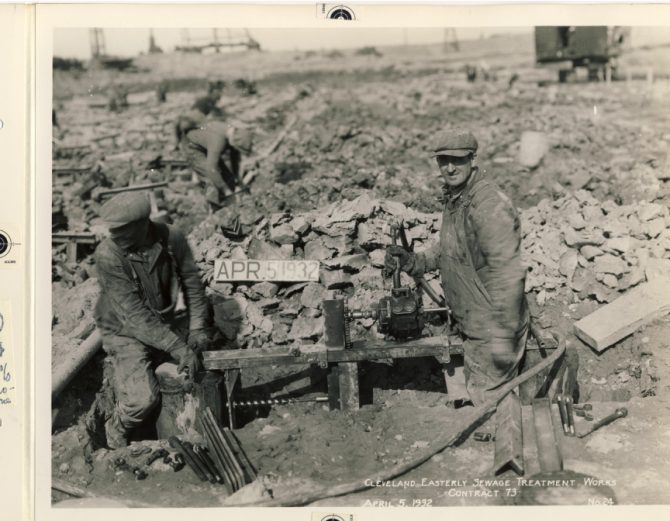 |
| Easterly Sewage Treatment Works construction, 1932. |
While Northeast Ohio’s first wastewater treatment efforts began in 1908, helping reduce pollution entering our waterways, much damage had already been done by industries that continued to dump hazardous wastes directly into the lake and river.
The result could be seen and smelled along the lakefront. The combined wastes left waterways almost uninhabitable for aquatic life, and the suffocating muck on the surface of the water was extremely flammable. Between 1949 and 1961, the river caught fire at least four times, leading up to the historic June 22, 1969 blaze that sparked local and national awareness and reaction.
WE CAN WAIT NO LONGER: PROGRESS EVER SINCE
The 1969 river fire was the turning point.
 |
| Stokes News Conference, 1969: Mayor Carl Stokes talks to reporters near the site of the Cuyahoga River fire in 1969. Image courtesy of Cleveland State Library Special Collections |
Cleveland Mayor Carl Stokes, the first black mayor of a major city when elected in 1967 and a long-time advocate for environmental responsibility, criticized the federal government and vowed to fight for a cleaner river. The next year, things started changing.
The blaze inspired the formation of the Environmental Protection Agency, the Clean Water Act, and in Ohio, the Northeast Ohio Regional Sewer District, which would take responsibility for the wastewater treatment needs of Greater Cleveland. This included clamping down on industries that illegally discharged waste into the lake and river, important work that continues to this day.
In 1972, the Regional Sewer District assumed control of Cleveland’s wastewater treatment plants, and has since invested billions of dollars in their improvement, and in new facilities and sewer construction. It has made a difference, preventing billions of gallons of sewage from polluting Lake Erie every year, and progress over the next 20 years—above ground and under ground—will bring it down by billions more.
Once declared “dead” by national media, the Cuyahoga River now boasts more than 60 different species of fish, has been found to be a home of freshwater mussels, and has been resurrected from negligence to elegance.
As agencies, businesses, and citizens continue to appreciate and protect our natural resources, Lake Erie and the Cuyahoga River will continue to improve. May the only thing left burning on the Cuyahoga River today be our desire to do better.
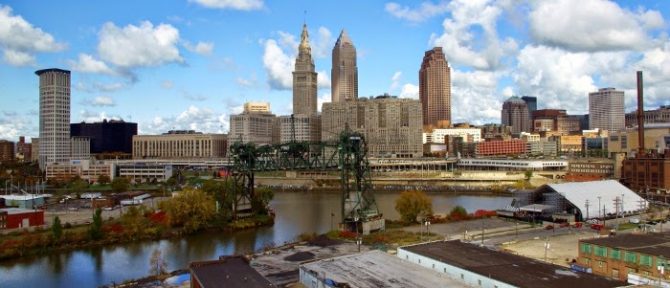 |
| John Baden, wikipedia. |
—Michael Uva and John Gonzalez

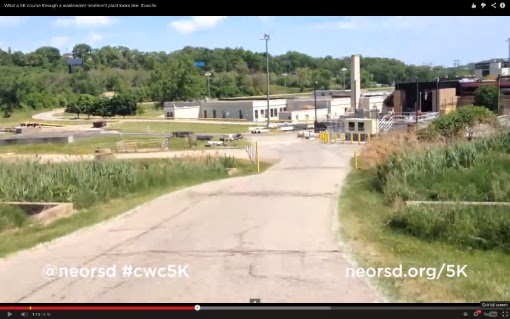
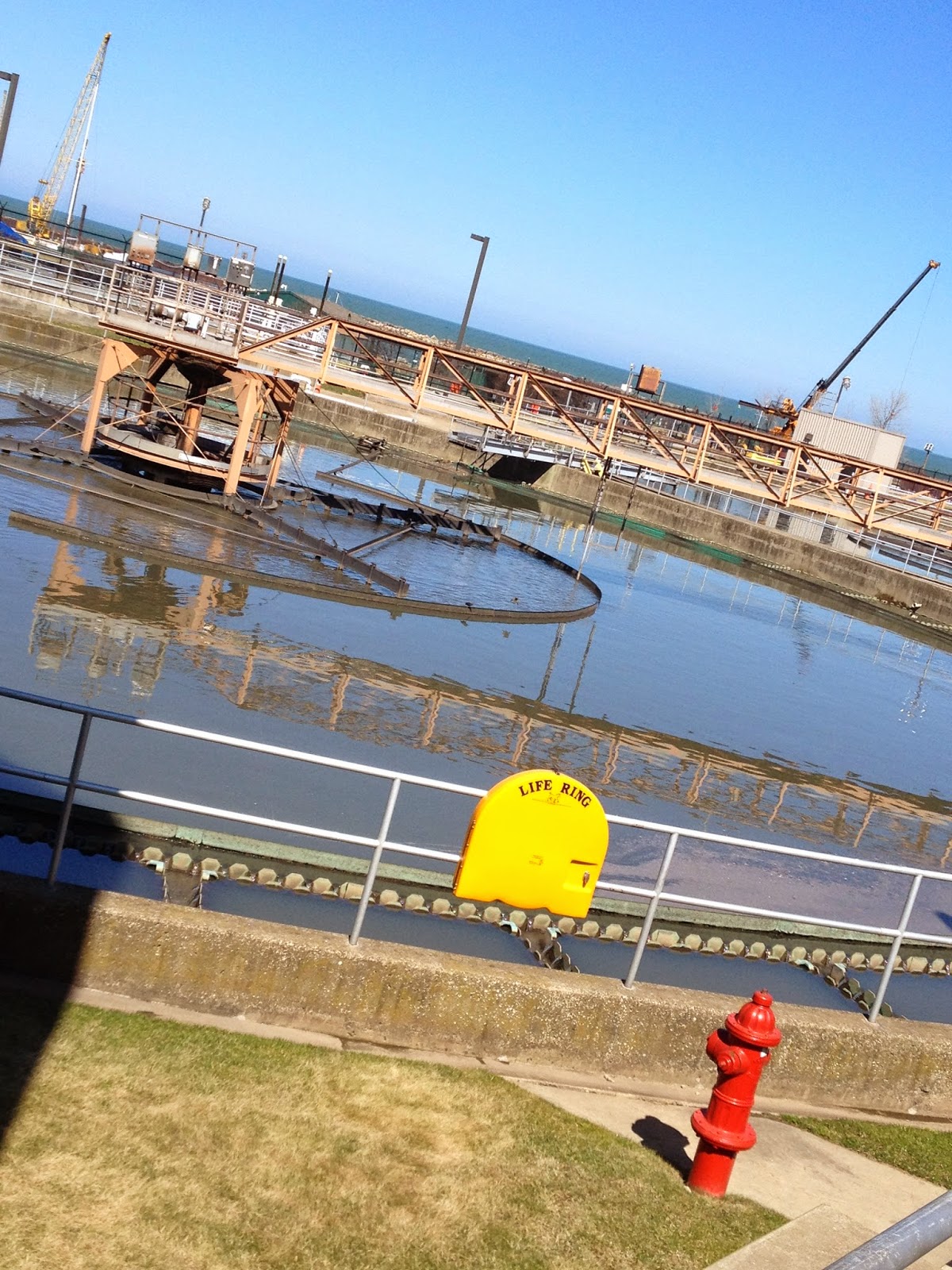
Comments ( 3 )
How the Last Fire on the Cuyahoga River Started
My father kept a dairy after his death I started to read them and found out how the last fire on the cuyahoga river happened because he was there when it happen. The ns railraod was blamed but it was caused by a brakeman on an other railroad how had a new fuse that was able to burn under water and he wanted to see if it worked and it did
The story goes that a spark from a NS locamotive crossing the NS bride I beleive it was called 450 started the fire. This bridge is now gone at the time of the fire three bridge lined up over the river all in a roll. The NS bridge 450 N&SS bridge 455 and B&O bridge 460 the only bridge still in use today. All members of the 5 man crew have passed away. The fuse came off of the caboose as it crossed over the river. The brakeman who dropped the fuse in the river had a long history of starting fires along the railroad right away usually old rail ties. In may fathers diary have all the newspaper articles about the event and a comment by my father "if they only knew"
How did your father keep a diary after his death?
You should have your fathers journal scanned in by a historical society. This kind of information is vital to the history of the region, and once things are lost, they are lost forever.